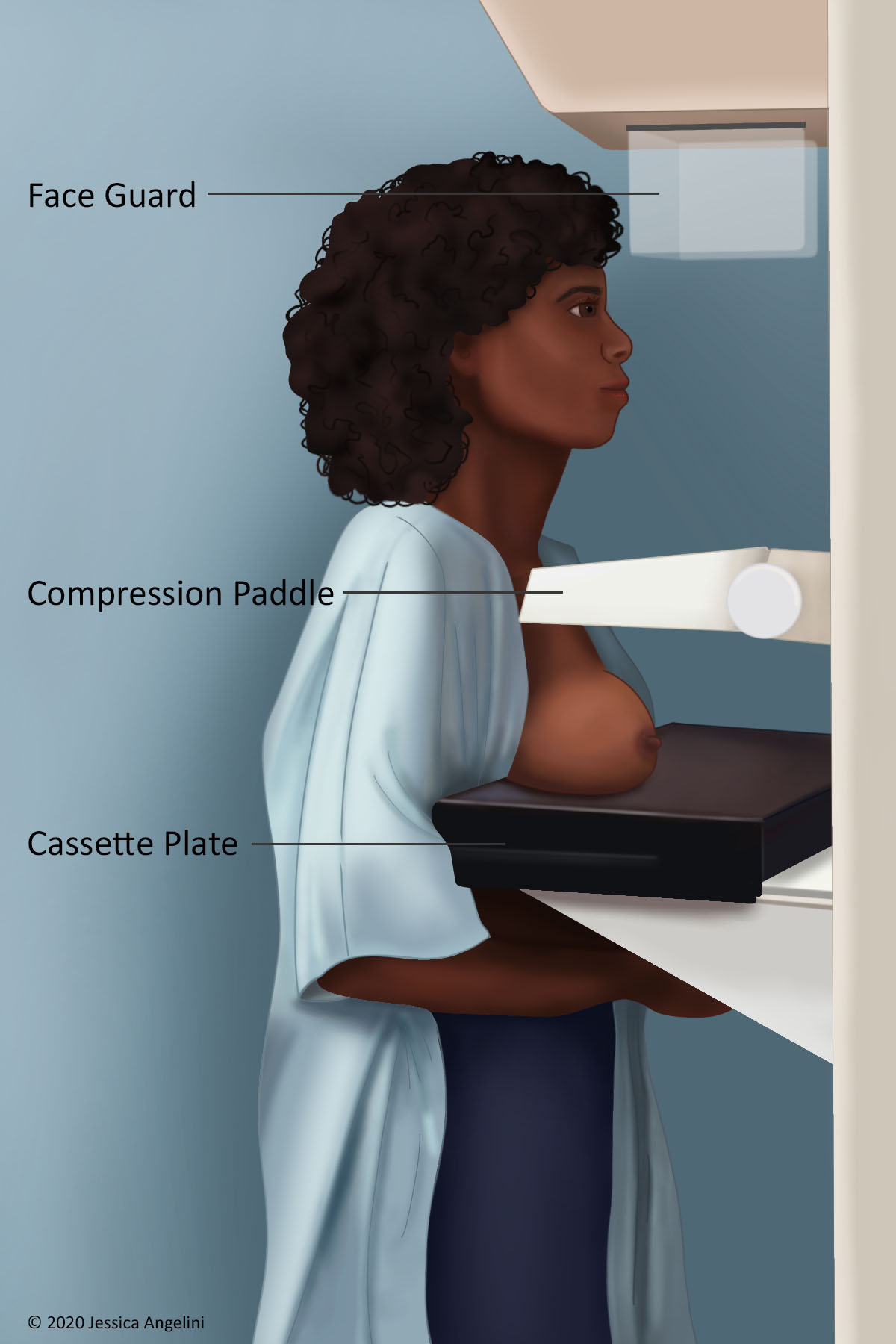
Contrast-Enhanced Mammogram (CEM)
Contrast-enhanced mammogram (CEM) is a test for breast cancer. CEM combines x-rays of the breast (mammogram) with contrast dye. The dye is given intravenously (IV, into a vein) and helps find new blood vessels that can form when cancers grow.
Your provider may want you to have a CEM if:
- You are at higher-than-average risk for breast cancer (due to personal or family history, or genetics).
- You have a lump seen on a mammogram and your provider wants more imaging.
- You have dense breasts.
- You can’t have a breast MRI.
- You have breast cancer and are getting chemotherapy before your surgery (called adjuvant chemotherapy). CEM can help providers see how the chemotherapy is affecting the cancer.
What are the benefits of CEM?
A CEM can find breast cancers that might not be seen on regular mammograms.
What are the risks of CEM?
CEM exposes you to more radiation than the usual mammogram, but it is still safe. You could have an allergic reaction to the contrast dye. Be sure to let your provider know if you have had any reaction to contrast dye in the past. Women who are pregnant or breastfeeding should not have CEM.
How do I prepare for a CEM?
Don’t use deodorant, perfume, lotion, cream, or any type of powder on the day of your mammogram. If you do, you will be asked to wipe it off before the test. You will need to undress from the waist up and put on a gown.
If you have had breast imaging (mammogram, ultrasound, MRI) at other centers, bring those images with you for the CEM. These can help the radiologist to compare images and look for changes.
How is the test performed?
Be sure your provider knows about all medications and supplements you take before the procedure. Your provider may order lab tests to check your creatinine level before the day of your CEM if you have diabetes or are older aged. The dye can affect kidneys and a creatinine level tells how your kidneys are working. If you are taking Metformin (a diabetes medication), check with your provider about restarting this medication after the CEM.
You will have an IV placed in your arm. You will be given the contrast dye through the IV. You may feel a warm sensation while you are getting the dye. This is normal.
Like a mammogram, you will be asked to stand in front of an X-ray machine. Your breast will be placed on a plastic plate. A second plate sometimes called a paddle, will press down on your breast from above. The pressing down of the top plate can cause pressure and discomfort. You may be asked to hold your breath and stand very still. While your breast is flattened, an X-ray picture will be taken. These steps are repeated to take a side view x-ray of the breast. This process will be done on both breasts.
After the CEM
Your provider will let you know the results of your CEM. Depending on the results, they may want you to have more tests like a breast MRI, ultrasound, or biopsy.
It’s important to drink 48-64oz of water in the 24 hours after your CEM. This helps the contrast dye move out of the body.
OncoLink is designed for educational purposes only and is not engaged in rendering medical advice or professional services. The information provided through OncoLink should not be used for diagnosing or treating a health problem or a disease. It is not a substitute for professional care. If you have or suspect you may have a health problem or have questions or concerns about the medication that you have been prescribed, you should consult your health care provider.
Information Provided By: www.oncolink.org | © 2025 Trustees of The University of Pennsylvania
